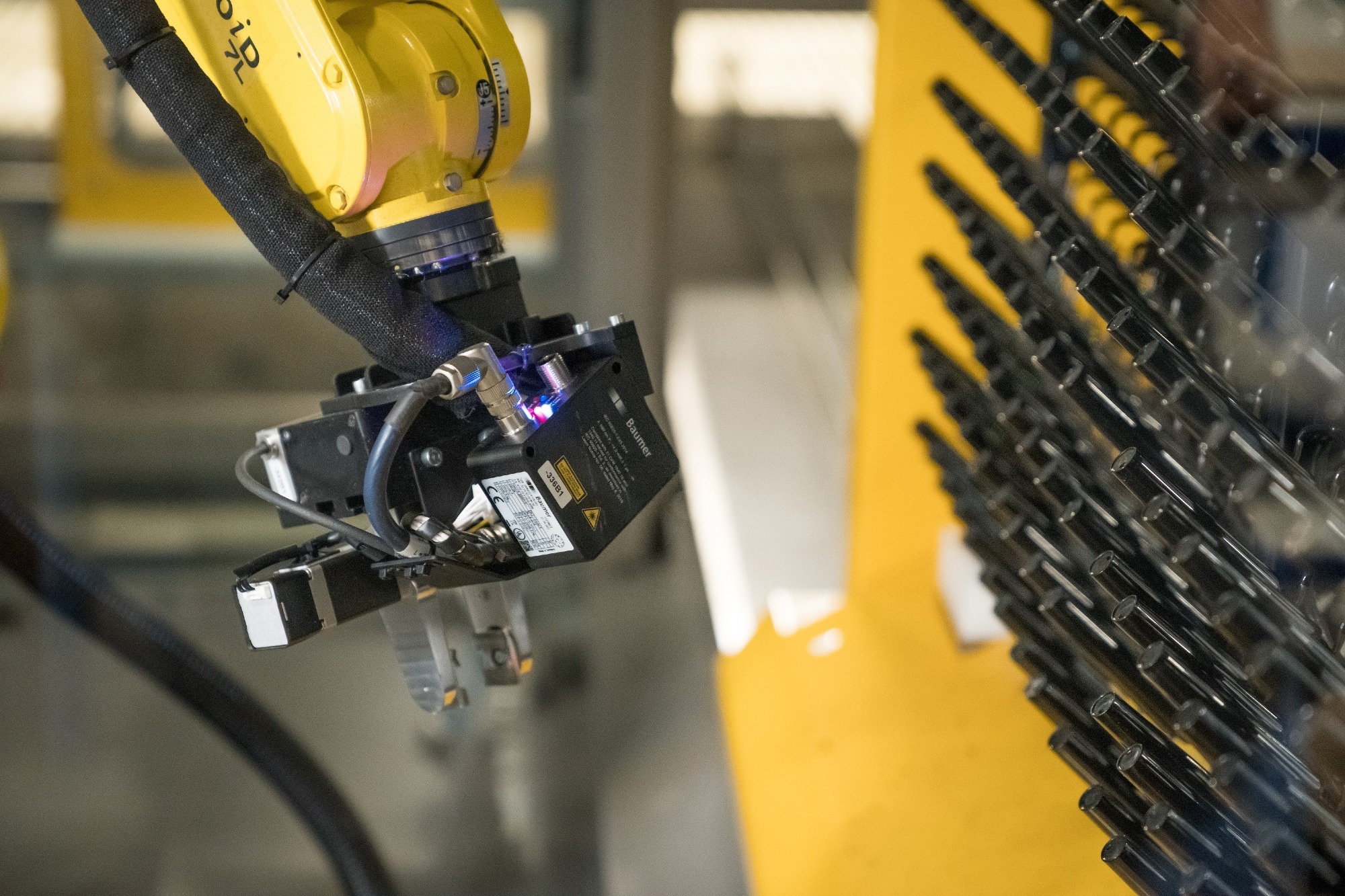In many applications surface coating such as electroplating is an important part of the manufacturing process and if performed manually, will require a considerable amount of space and human resources. However, a good example of the benefits of advanced automation and robotics is the development of an innovative robot cell which enables fully automated electroplating and has proven to be a big benefit to Swiss automation company Roth Technik.

Image Credit: BAUMER
A three-way collaboration between the customer, surface coating specialist Collini based in Dubendorf, near Zurich, with automation company Roth Technik and sensor specialist BAUMER, has resulted in the development of a fully automatic system for plating racks. Minimal space was a key factor for the customer which is why they were looking for a space-saving solution that would enable a fast and reliable way of hanging small parts on racks in preparation for transfer to the electroplating bath.
Marco Fuchs, Head of Product Engineering at Collini explains, “Boxes containing small metal parts were stacked in a narrow niche with barely enough space to manoeuvre a single pallet between the wall and the liquid tanks. Behind this assembly are rows of tightly packed electroplating tanks and this lack of space was a key factor in why we were looking for a space-saving solution that would deliver a fast, reliable way of hanging small parts on racks for the electroplating bath”. The conventional method of loading the racks by hand requires lots of space and human resources because several racks need to be loaded at the same time. Collini confirmed, “This is why we wanted to switch to a new automated coating system. However, this type of system had yet to be created so we embarked on a search for pioneering companies that we could collaborate with to take up the challenge”. The search resulted in collaboration between Collini, automation specialists Roth Technik, which in turn relies on smart sensor solutions from Baumer.
Working together, the team began the development of a fully automatic and compact loading line. At the heart of the loading line are 4 robots that automatically load parts onto the empty hooks on the racks, with the biggest challenge being that no two racks are the same. The hook positions are not located in exactly the same place on the welded racks and some hooks may be bent or missing entirely. Whilst this isn’t a problem for a manual system, it is a big challenge for robots that require precise positioning data. Furthermore, the huge variety and high throughput of parts presented other challenges. So how did the ‘team’ solve the problem of rack positioning accuracy, enabling the robots to ‘learn’ the exact positions of the hooks for each rack?
A simple, yet effective solution from Baumer, the ultra-compact OXM200 profile sensor proved to be a key component in the efficacy of the system. Mounted on the robot arm, the sensor detects the exact position of each individual hook as it moves down the rack and reports this data back to the robot control. With the help of a camera, the robot then picks up one part after the other from the separating carousel and hangs it on a hook. The robot uses the position coordinates previously collected by the profile sensor to finely adjust the position of the part and this enables the profile sensor to guide the robot precisely and quickly on the electroplating rack.
Markus Roth, CEO of Roth Technik, explains, “Whilst the process might sound simple it requires the sensor to deliver an outstanding performance, we had to install a sensor that detects and precisely measures very thin hooks, not just in 2-dimensional space but in a 3-dimensional one too”. Initially, the Roth Technik team tested various camera-based systems and other laser-based scanners, but eventually decided that the sensor was the way to go. Markus confirmed, “In the end, we chose the Baumer OXM200 profile sensor because it was the best solution for our strict requirements regarding accuracy, ultra-compact design and ability to detect objects”.
The OXM200 offers another major advantage, thanks to powerful, integrated measuring tools, the sensor outputs the measured values for the X and Z coordinates directly in mm, significantly reducing the number of calculations in the control. This resulted in less integration work on software and enabled the project to be up and running faster.
Also, thanks to Power over Ethernet (PoE) a single cable is all that was needed to connect the sensor to the control and supply it with power, an important detail when it comes to mounting the sensor on a mobile robot arm. Further time savings are achieved by scanning the hook positions only once when the rack is inserted and as the control stores all the hook positions, the racks don’t have to be scanned each time. The result…two robot cells enable a throughput of 15 million parts per year using minimal space whilst eliminating the issues associated with a manual system.